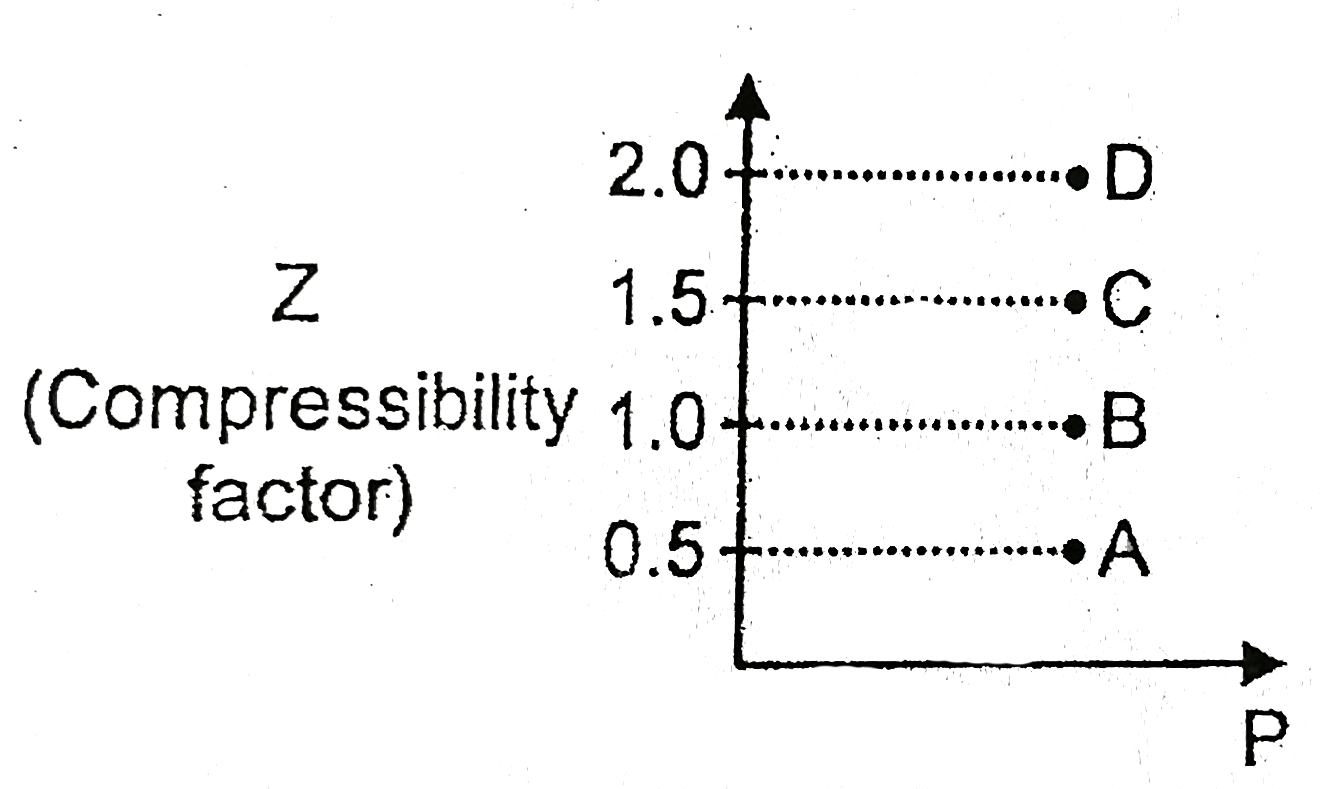What is molar volume of an ideal gas under N.T.P. conditions ?
To find the molar volume of an ideal gas under Normal Temperature and Pressure (N.T.P.) conditions, we can follow these steps:
1. Define N.T.P. Conditions:
- Normal Temperature (T) is defined as 0 degrees Celsius (or 273.15 K).
- Normal Pressure (P) is defined as 1 atmosphere (atm).
2. Use the Ideal Gas Law:
- The Ideal Gas Law is given by the equation:
PV=nRT
where:
- P = pressure (in atm)
- V = volume (in liters)
- n = number of moles of gas
- R = ideal gas constant (0.0821 L·atm/(K·mol))
- T = temperature (in Kelvin)
3. Calculate Molar Volume:
- Molar volume (Vm) is defined as the volume occupied by one mole of an ideal gas. Therefore, we can rearrange the Ideal Gas Law to find the molar volume:
Vm=RTP
- Substitute the values for R, T, and P:
- R=0.0821L⋅atm/(K⋅mol)
- T=273.15K
- P=1atm
- Plugging in the values:
Vm=(0.0821L⋅atm/(K⋅mol))×(273.15K)1atm≈22.4L/mol
4. Conclusion:
- Therefore, the molar volume of an ideal gas at N.T.P. conditions is approximately 22.4 liters per mole.
- Normal Temperature (T) is defined as 0 degrees Celsius (or 273.15 K).
- Normal Pressure (P) is defined as 1 atmosphere (atm).
- The Ideal Gas Law is given by the equation:
PV=nRT
where:
- P = pressure (in atm)
- V = volume (in liters)
- n = number of moles of gas
- R = ideal gas constant (0.0821 L·atm/(K·mol))
- T = temperature (in Kelvin)
- Molar volume (Vm) is defined as the volume occupied by one mole of an ideal gas. Therefore, we can rearrange the Ideal Gas Law to find the molar volume:
Vm=RTP
- Substitute the values for R, T, and P:
- R=0.0821L⋅atm/(K⋅mol)
- T=273.15K
- P=1atm
- Plugging in the values:
Vm=(0.0821L⋅atm/(K⋅mol))×(273.15K)1atm≈22.4L/mol
- Therefore, the molar volume of an ideal gas at N.T.P. conditions is approximately 22.4 liters per mole.
Similar Questions
Knowledge Check
A gas that follows Boyle's law, Charle's law and Avogadro's law is called an ideal gas. Under what conditions a real gas would behave ideally ?
AUnder low pressure and temperatureBUnder high pressure and temperatureCUnder high pressure and low temperatureDUnder low pressure and high temperatureWhich of the following is correct option for free expansion of an ideal gas under adiabatic condition?
Aq≠0,ΔT=0,W=0Bq=0,ΔT=0,W=0Cq=0,ΔT<0,W≠0Dq=0,ΔT≠0,W=0
The compressibility factor (Z) for one mole of a gas is more than one under S.T.P. conditions. Therefore
View SolutionGas is enclosed in a cylinder under S.T.P. conditions. At what temperature does the volume of the enclosed gas become 1/6th of its initial volume, pressure remaining constant ?
View SolutionA gas that follos Boyle's law, charle's law and Avogadro's law is called an ideal gas. Under what conditions a real gas would behave ideally ?
View SolutionAt 47∘C and 16.0 atm, the molar volume of NH3 gas is about 10% less than the molar volume of an ideal gas. This is due to :
View SolutionMolar volume of an Ideal gas is 0.45dm3/mol. The molar volume of air (assumming as real gas) under the same condition is 0.9dm3/mol. The point which corresponds to air the given graph is :

View SolutionWhat is an ideal (or perfect) gas ? Under what condition of pressure and temperature can a gas be assumed as an ideal gas ? Determine the gas constant for one gram molecule of a gas.
View Solution
